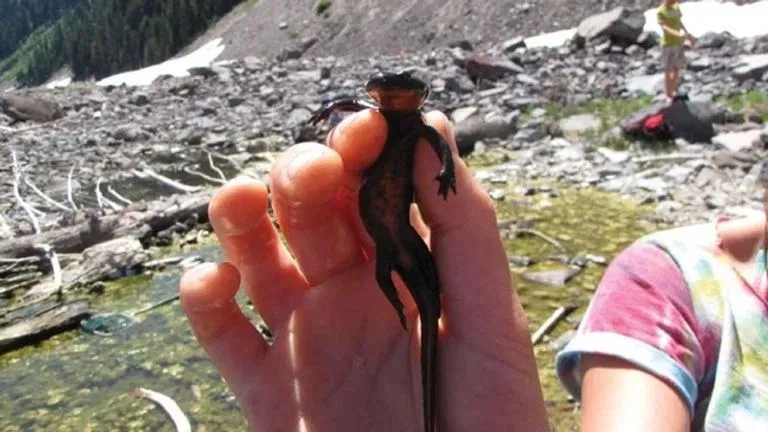The native Crater Lake newt, also known as the Mazama newt, may soon be protected under the Endangered Species Act after a petition from the Center for Biological Diversity caught the attention of the U.S. Fish and Wildlife Service. This rare amphibian, found only in Oregon’s iconic Crater Lake, is facing serious threats that could change the lake’s ecosystem forever.
Unique Species at Risk

The Crater Lake newt is a subspecies of rough-skinned newt, uniquely adapted to live in the lake’s pristine environment. Unlike its relatives, it lacks the powerful neurotoxins that deter predators because it evolved atop the aquatic food chain in Crater Lake. Unfortunately, that evolutionary history has left it unprepared for new threats invading its habitat.
Invasive Signal Crayfish Threaten Survival
The primary danger to the newt is the invasive signal crayfish, introduced over a century ago to feed non-native fish species. While intended to benefit the lake’s recreational fishing, these crayfish populations exploded recently due to warming lake temperatures linked to climate change. The crayfish now occupy more than 95% of the lake’s shoreline and outcompete the newts for food, feeding on invertebrates critical to the newt’s diet.
“This is a critical moment,” said Chelsea Stewart-Fusek, an endangered species attorney with the Center for Biological Diversity. “We need funding now to remove signal crayfish from Crater Lake before the newts are wiped out and this incredible lake is changed forever.”
Scientific Review and Conservation Efforts
The Fish and Wildlife Service’s recognition that the newt may qualify for endangered protections triggers a yearlong scientific review. If the newt is officially listed, it would open the door for federal funding aimed at restoring its population through crayfish removal efforts and possibly captive breeding programs.
In a bid to preserve the species, organizations like the Oregon Zoo have partnered with scientists and conservationists to develop strategies, including temporarily housing newts for breeding and eventual reintroduction. These efforts mark only the second time this elusive amphibian has been cared for in human facilities.
Broader Environmental Warning
The plight of the Crater Lake newt serves as a stark reminder of the broader impacts invasive species and climate change have on fragile ecosystems. Amphibians worldwide are among the most threatened groups, with nearly 40% at risk of extinction due to habitat loss, pollution, and introduced species.
“This is a grave warning for all of us,” said Stewart-Fusek. “When wildlife and their habitats suffer, it ultimately endangers human communities too.”
Hope for the Future
As the review process unfolds, conservationists and scientists remain hopeful that swift action will preserve Crater Lake’s unique amphibian. The newt’s survival depends on public awareness, funding, and coordinated removal of invasive species.
Preserving this rare creature means not only protecting a singular species but also maintaining the ecological integrity of one of the world’s most renowned natural landmarks. Crater Lake has long been celebrated for its clarity and beauty—qualities closely tied to the delicate balance of life within its waters.




